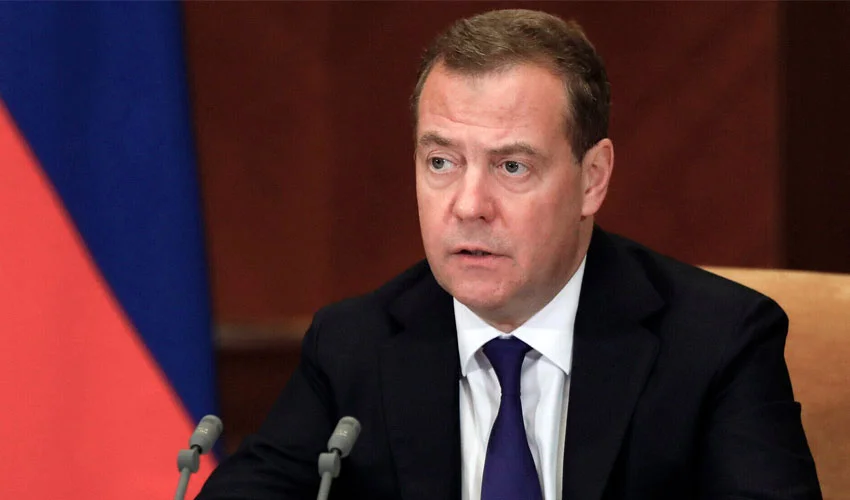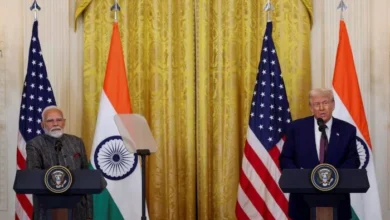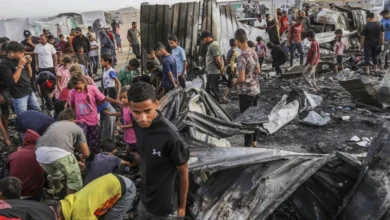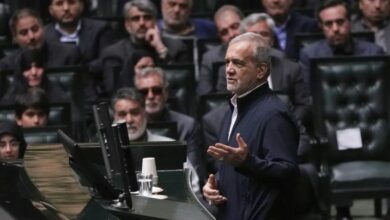Russia has officially abandoned its moratorium on deploying intermediate- and short-range nuclear missiles, citing what it calls escalating military threats from the United States and NATO allies in Europe and the Asia-Pacific.
Former President Dmitry Medvedev, now deputy head of Russia’s Security Council, issued a stark warning on Monday, saying Moscow’s decision marks a new geopolitical reality, and more moves could follow.
Russia lifts moratorium on missile deployment
In a statement released by the Russian Ministry of Foreign Affairs, officials said the current global security environment—particularly US missile activity in Europe and Asia—has invalidated the conditions under which Russia had voluntarily restrained from deploying medium- and short-range land-based missiles.
“The conditions for maintaining a unilateral moratorium on the deployment of similar weapons have disappeared,” the statement read.
Read here: Witkoff to lead Ukraine peace talks in Russia: Trump
The moratorium was in place following the 2019 collapse of the Intermediate-Range Nuclear Forces (INF) Treaty, a Cold War-era agreement that banned ground-launched nuclear missiles with ranges between 500 and 5,500 kilometers.
Medvedev blames NATO for new escalation
Dmitry Medvedev pointed the finger at NATO’s “anti-Russian policy,” claiming it forced Moscow’s hand. In a message posted on X (formerly Twitter), he wrote:
“This is a new reality all our opponents will have to reckon with. Expect further steps.”
Although Medvedev didn’t clarify what those next steps might be, his warning adds to the growing list of hawkish remarks he has made in recent years, particularly around Russia’s nuclear posture.
Trump’s response triggers further tension
In response to Medvedev’s previous nuclear remarks, former US President Donald Trump announced last week that he had ordered two US nuclear submarines to reposition to “appropriate regions.” It’s unclear whether this move is symbolic or signals a shift in US military readiness.
The Kremlin appeared to downplay Trump’s comments, with spokesman Dmitry Peskov stating that American submarines are always on combat duty and that Moscow seeks to avoid “public spats.”
“We believe that everyone should be very, very careful with nuclear rhetoric,” Peskov said.
Strategic backdrop: US, NATO, and the Asia-Pacific
The geopolitical context behind Russia’s announcement includes broader strategic maneuvers by the US and NATO in regions close to Russian borders. Foreign Minister Sergey Lavrov said in December that Russia’s moratorium was no longer sustainable, citing active US efforts to deploy similar missile systems globally.
“The United States arrogantly ignored warnings from Russia and China,” Lavrov said, referencing Washington’s moves since the INF treaty breakdown.
The 1987 INF Treaty—signed by Mikhail Gorbachev and Ronald Reagan—was a landmark in arms control that eliminated an entire category of nuclear weapons. Its collapse has triggered fears of a renewed arms race.
Sanctions threat adds pressure
This latest episode unfolds as Trump sets a new deadline: unless Russian President Vladimir Putin agrees to a ceasefire in Ukraine by Friday, the US will impose fresh sanctions on Moscow and its oil buyers, including India and China.
While Putin admitted last week that peace talks had made some progress, he reaffirmed that Russia still holds the military upper hand and gave no sign of backing down.
What’s next?
With Russia formally stepping away from a critical arms control restraint and both sides trading veiled threats, the risk of escalation—militarily and diplomatically—appears to be growing. Analysts warn that without renewed dialogue or a framework to replace the INF treaty, the world may be entering a more unstable phase of nuclear posturing.







